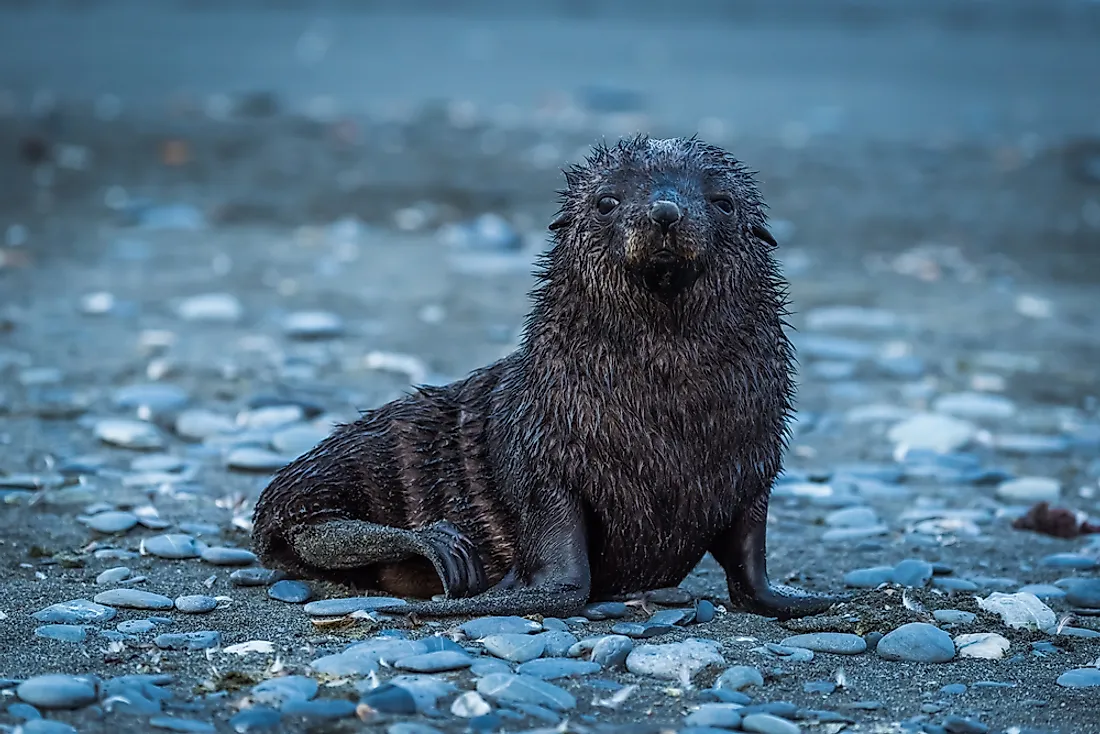What is a Pinniped?

What is a Pinniped?
Pinnipeds are aquatic and carnivorous mammals that belong to the order Pinnipedia. They are commonly known as seals and they comprise of the Odobenidae, Otariidae and the Phocidae monophyletic families. There are 33 species of pinnipeds, which consist of fourteen species of otariids, eighteen for phocids, and one for the walrus. Their population is slightly over 28% of the marine mammals' population. Extant pinnipeds compose of a small portion of the initial diverse group of the animals. For instance, there is only one species of walrus currently, but in the past there were more than fifteen of them.
General Features of Pinnipeds
Pinnipeds spend their lives primarily in the water, but they are also dependent on land unlike other sea creatures such as dolphins and whales. They occasionally come ashore to bask in the sun and rest, and most of them congregate on the sea ice or the beaches at least once per year for breeding. Besides, pinnipeds have a thick layer of fat under their skin, which helps reduce the loss of body heat in the surrounding cold environment (water). Moreover, the thick layer stores energy and make the body shape of pinnipeds to be streamlined so that they can quickly move in water.
Diving Adaptations
Pinnipeds have unique lungs with airways which are highly strengthened with smooth muscles and cartilaginous rings. They usually exhale to empty their lungs before diving, and then close their throat cartilages and nostrils to avoid any harm on the trachea. Pinnipeds can reinflate their lungs in case of total failure of their respiration. Pinniped's hearts have a moderately flat shape to enable its lungs to deflate during diving, while the trachea can easily collapse under pressure because of its flexibility. Seals also have sinuses in their middle ears which are filled with blood to prevent middle ear squeeze when they are diving. Mainly, the circulatory systems of pinnipeds contain increased complexity and enlarged veins to enhance their capacity during diving.
Pinniped Intelligence
A pinniped has a long-term memory that enables it to understand and gain the desired behavior after training. In fact, it can perform an activity or a trick after over three months of being passive to the act. According to one match-to-sample task research, one California sea lion (a kind of pinniped) showed understanding of equivalence, symmetry, and transitivity while the second one could not do the work. They demonstrated that they understand simple commands and syntax if they are taught human-made sign language but they could hardly use the signs logically or semantically.
Pinnipeds have also be seen doing rhythmic entrainments like parrots and human beings. The entrainment was witnessed in 2011 when a captive California sea lion was spotted bobbing its head to synchronize to the rhythms of music. Moreover, a captive harbor seal was able to imitate human laughter and phrases after training in 1971. Due to their intelligence, trainers often use seals in entertainment. A typical example of a trick is when a trainer makes the animal accidentally balance a ball on its nose when he tosses the ball on it.











